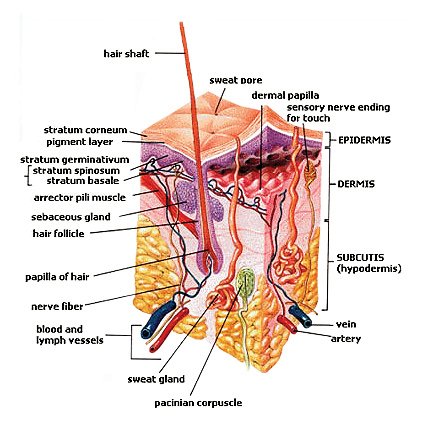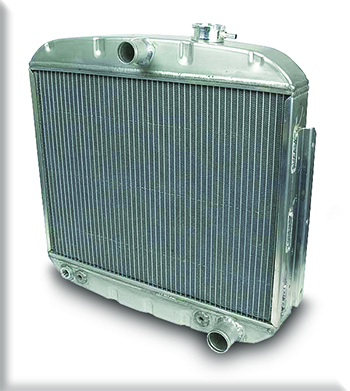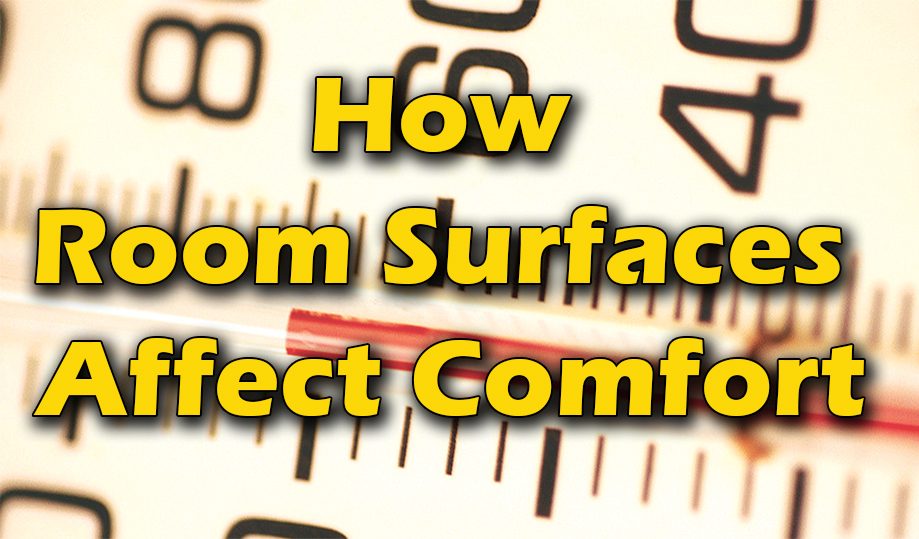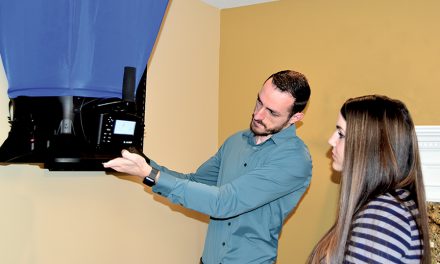The human body’s control system reduces heat transfer to the surroundings when the body temperature begins to drop. It increases heat transfer when the body temperature rises. Your body transfers heat to its surroundings by convection, evaporation, radiation, and (to a small extent) conduction.
Heat Loss by Convection

As our body temperature rises from above 98.6° F, our blood vessels near the skin surface expand, allowing more blood to flow to the skin. Skin temperature rises due to hotter blood, increasing the heat lost to the air because of the more significant skin-to-air temperature difference (Delta T or ΔT).
The skin is the body’s heat rejection layer or “radiator.” The temperature and velocity of the air moving over the skin directly affects the amount of convective heat loss from the skin.
Heat Loss by Evaporation
Should the heat lost by convection be inadequate to remove all the excess heat from the body, the deep body temperature will continue to rise, causing the sweat glands to open. As the skin’s surface becomes moist, sweat removes additional heat through evaporation into the surrounding air.

In the process, your skin surfaces cool. The amount of evaporation (cooling effect) from the skin depends on the humidity and velocity of the surrounding air. The higher the humidity, the lower the evaporation rate; increasing air motion tends to increase the evaporation rate.
Heat Loss by Radiation
Radiation is perhaps the least understood method of body heat rejection, but it is a significant mode of heat loss. The human body receives heat energy from any surface warmer than the skin and loses heat to any surface cooler than the skin.
A classic example of radiation heat transfer is from warming in front of a glowing fireplace. In this process, your body warms directly from the radiant energy emitted by the fire and not by the air that is in front of you. For radiant heat transfer to occur, your body must “see” the radiating surface.
As in our real-life example introduction, in the winter, the inside surface of a large window may be much colder than a person’s skin surface temperature. Hence the body would radiate considerable heat to the cold window.
A person may shiver in front of the large window even though the room air temperature is normal and body heat loss by convection and evaporation is minimal. To compensate for the high radiation heat loss, a person might wear a sweater or raise the thermostat to increase room air temperature and reduce convective and evaporative heat loss.

Effect of Surrounding Temperature
The curves to the right illustrate how the amount of heat rejection by each heat transfer mode can change depending on the surrounding environment. As the air temperature increases, body heat loss by evaporation increases, and heat loss by radiation and convection diminishes.
At 70° F, you lose only 100 Btuh by perspiration and 300 by radiation and convection. At 90° F, the situation reverses; you lose less heat by radiation and convection, and more heat by evaporation.
Building Envelope Affects Human Comfort

The quality of the building/room thermal envelope is a significant factor in providing human comfort. Insulation, for example, can reduce radiant heat loss by increasing inside-wall surface temperatures.
The illustration to the left shows the temperature gradient through an insulated and uninsulated frame wall. On frigid days, the inside uninsulated wall surface temperature might be as low as 61°F while a fully insulated wall at the same outdoor conditions would be over 71°F.
This means a person would radiate less heat to an insulated wall than to an uninsulated one. It also means that designing an air distribution system that provides a comfortable environment would be easier.
Click Below for the Next Page:













My uncles knew this back in the 1940s. They made the ceilings the radiant heat source in their homes. Their homes were the most comfortable winter homes I’ve ever been in.